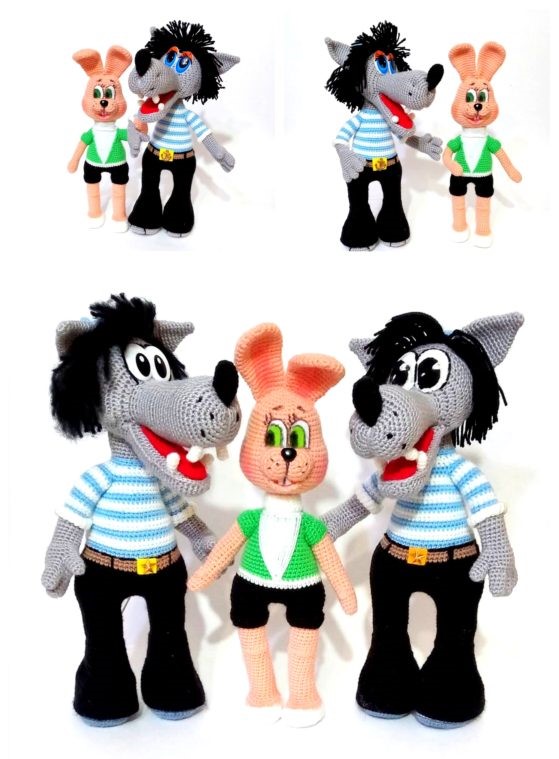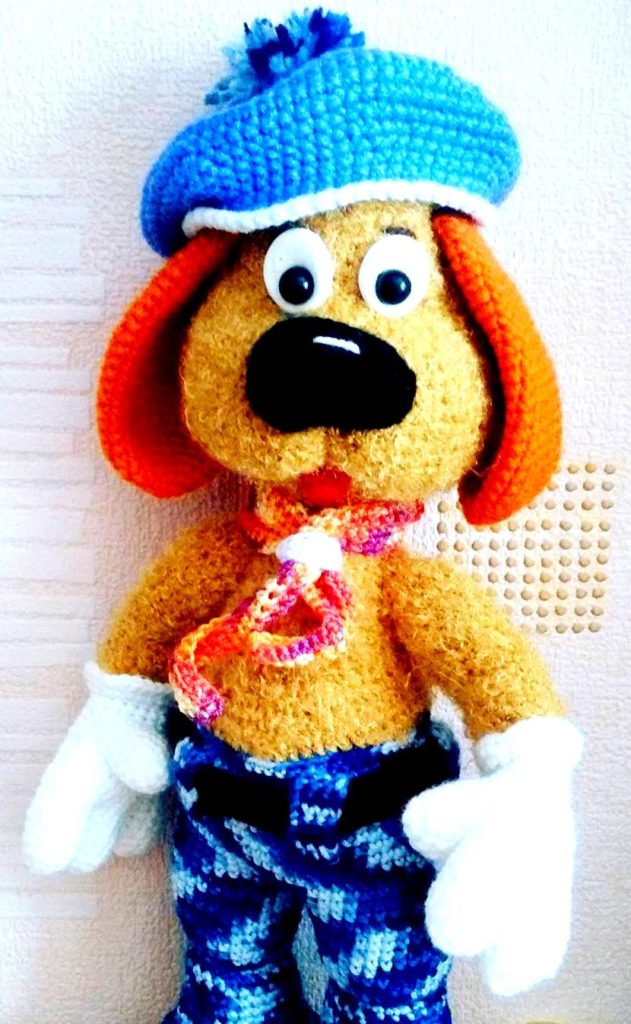Amigurumi Horse Free Crochet Pattern with African Flower Motifs
Pinterest Offical Page : Amigurumfree.msa.plus
Facebook Group: Amigurumi Free Patterns
Facebook Offical Page: Amigurumfree.msa.plus
We share the latest free patterns with Amigurumi with you. In this article, amigurumi horse free crochet pattern with african flower motifs is waiting for you.
Crocheted horse made of African flower motifs. A step-by-step and very detailed master class.
The horse is perhaps one of the most interesting and beautiful animals! Every needlewoman not once comes up with the idea of making a cute horse for herself or her child. Our masterclass is designed for beginner craftswomen and experienced needlewomen may also like it. The advantages of this horse is that it is assembled from the same fragments – “African Flower” motifs. It’s easy to knit them, and having learned and honed the skill of knitting a motif, you can create not only horses, but also other animals you love. Another indisputable advantage of knitting a motif is the possibility of various combinations of colors, sizes and patterns. Each motive can be unique in color, and their combinations create a wide field for imagination.
In total, in our master class you need to do 42 motives.
triangle – 1 piece,
quadrangle – 3 pieces,
pentagon – 19 pieces,
hexagon – 15 pieces + 2 pieces for ears,
heptagon – 2 pieces.
Materials and tools for knitting.
Multi-colored bright yarn. In the master class, the horse knitted from the “Iris” yarn.
Yarn for mane and tail.
Hook No. 1.5 (or another one corresponding to the yarn you have chosen).
Filler for a toy (for example, synthetic winterizer or sliver).
Scissors.
Needle for stitching parts.
Cardboard sheet.
Let’s start knitting a hexagonal motif. We will knit according to the scheme:
The motive from which we will knit a horse is called the “African Flower”. It is very often used for knitting blankets, shawls and even bags. And from it knit funny toys!
We take a yarn of a different color.
Second row: Again we knit two lifting air loops, then into the hole formed by the air loop of the previous row, we knit a double crochet, an air loop, two double crochets. We repeat * two double crochets, an air loop, two double crochets * into the hole formed by the air loop of the previous row – 5 times.
To knit the next row, you can again change the color of the yarn, or you can continue to knit the same.
Third row: Using half-columns, get to the hole that formed the air loop of the previous row (between the two double crochets). We knit two air loops for lifting and 6 double crochets. Repeat * 7 double crochet * – 5 times.
So, let’s start knitting.
We collect 5 air loops and close them in a ring. We begin to knit the first row: two air loops for lifting, a double crochet, an air loop. Next, repeat * two double crochet, air loop * – 5 times.
Change the color of the yarn. It is better if it is a yarn of a contrasting color.
Fourth row: * 7 single crochet, double crochet * – repeat 6 times
Again, change the color of the yarn and tie the flower with double crochet.
The last row is single crochet with white yarn:
The remaining motives fit in similarly. We also give a knitting scheme for a pentagonal motif:
So, we should get 42 motives.
Now let’s start the assembly. There are several ways to assemble things related to individual motives. You can read more about these methods here:
Crochet motifs
In this workshop, the parts are sewn together, but you can choose the method of joining the parts that you prefer.
Let’s start collecting the horse from the face. Take the following details: 1 triangular motif and 3 pentagonal motifs.
We sew them together, as shown in the photo:
Now take 3 more pentagons.
Sew them to the muzzle.
Take another pentagonal motive:
Sew it to the back of the head.
We sew two hexagons – on the one and the other side. This will be the horse’s neck.
Next, sew one pentagon and one hexagon. We are doing this from both sides.
We continue to connect the details. The diagram shows how to do this. In those places where the number “4” stands, we place the quadrangles.
Now we will collect the legs separately, and then attach them to the horse’s body.
For each leg, we need the following motives:
We sew motives among themselves. The leg is ready.
Thus, at this stage, we have three details left unstitched: a heptagonal motif (sewn by the very last on the tummy) and two hexagonal motifs for the ears.
We sew the legs to the body, until we sew the heptagon onto the tummy, through this hole we will stuff the toy.
We stuff a toy:
We sew a heptagonal motif on the tummy, thereby closing the hole.
That’s what kind of horse we got. True, so far without a mane, tail and ears.
Side view:
Back view:
We begin to create mane. To do this, we need more fluffy and soft yarn. And in order to make the mane smooth, we will use one tricky device. In principle, if you trust your eye, then you can simply attach the thread.
In order for the hairs of the mane to be the same length, we will make a blank from cardboard. Circle the horse’s neck.
Draw a mane on cardboard.
We cut out the detail and try on.
We start wrapping the cardboard with thread. You can use a needle for this (if the yarn you have chosen is not too thick and fits into the eye of the needle) or you can pull the threads with a hook.
We wrap the entire cardboard mane with yarn.
Cut on top and dissolve the “hair”:
You can slightly trim the bang 🙂
From the same yarn we make a tail for a horse:
We proceed to attach the ears. The eye is a hexagonal motif folded in half and tied with single crochet columns.
We turn the eye in half and fix it with a needle. You don’t need to trim the thread, as we will then sew the ears to the horse’s head.
Sew on the ears.
The horse is ready! 🙂
Enjoy your knitting! With best wishes for creativity, toy author Anna Lavrentieva.








